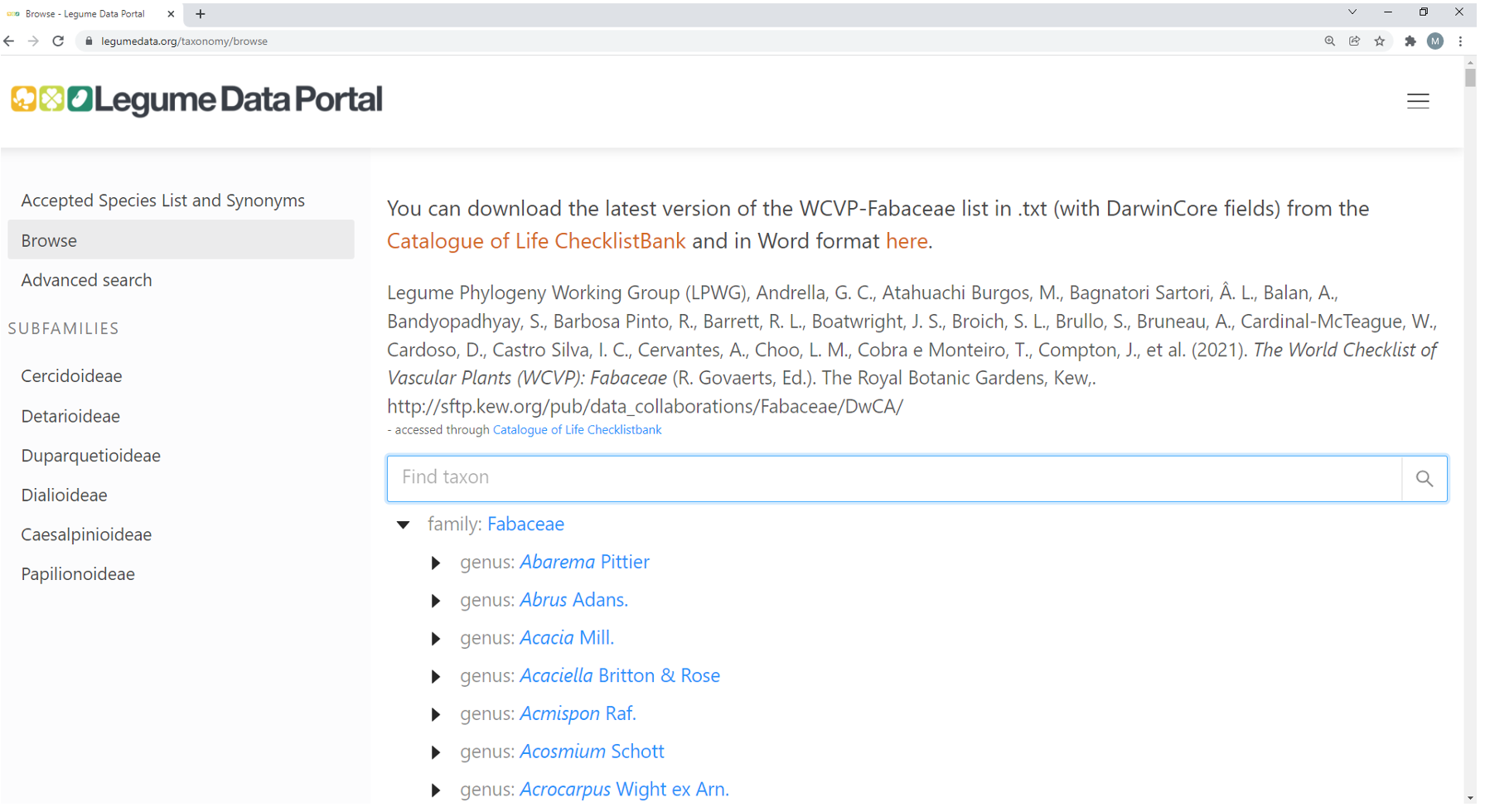Taxonomy Working Group
A first updated version of the legume checklist published in 2021
Coordinators:
Marianne le Roux, South African National Biodiversity Institute (SANBI), South Africa
Anne Bruneau, Université de Montréal, Canada
The Legume Taxonomy Working Group was established in May 2020 and tasked to create an updated, community-endorsed legume species checklist. It is envisioned that this checklist will enable more effective collaboration undertaken by the broader legume research community and will serve as the primary source of taxonomic name information for legumes for other online platforms such as the Global Biodiversity Information Facility (GBIF) and Catalogue of Life (CoL). The Legume Taxonomy Working Group was chosen as the World Flora Online’s (WFO) Taxon Expert Network (TEN) and will provide the taxonomic backbone for the Leguminosae within the WFO taxonomic backbone.
A network of 80 legume taxonomists, including 38 subfamily and tribe coordinators, from 24 countries collaborated with Rafaël Govaerts at the Royal Botanic Gardens, Kew, to update the legume checklist. In total, 6,167 corrections were captured and about 2,011 names added to the checklist. In June 2021, the first updated version of the checklist was published on the CoL’s ChecklistBank and incorporated into the GBIF taxonomic backbone in December 2021. The checklist also feeds through to the new Legume Data Portal where the checklist data are searchable.
 A screenshot of the legume checklist search page on the Legume Data Portal.
A screenshot of the legume checklist search page on the Legume Data Portal.
Excellent progress has been made with updating the checklist especially for subfamilies Cercidoideae and Dialioideae which are fully checked, and Detarioideae of which 87% of the checking has been completed. About 45% of the Papilionoideae have been reviewed to date. Tribes Abreae, Amorpheae, Crotalarieae, Dalbergieae, Desmodieae, Diocleae, Vicieae, Galegeae, Genisteae, Millettieae, Phaseoleae, Robineae, Sophoreae and Trifolieae are still in progress. Because most people working on Caesalpinioideae are currently devoting their efforts to compiling Advances in Legume Systematics Part 14 which will present a new generic and tribal/clade-based classification of Caesalpinioideae to be published in 2022, only about 3% of the genera in this subfamily have so far been checked. Once ALS14 is published, efforts will be directed to updating the Caesalpinioideae names in the checklist.
If you are interested in joining us in updating and maintaining the legume checklist, please contact Marianne le Roux (m.leroux@sanbi.org.za)